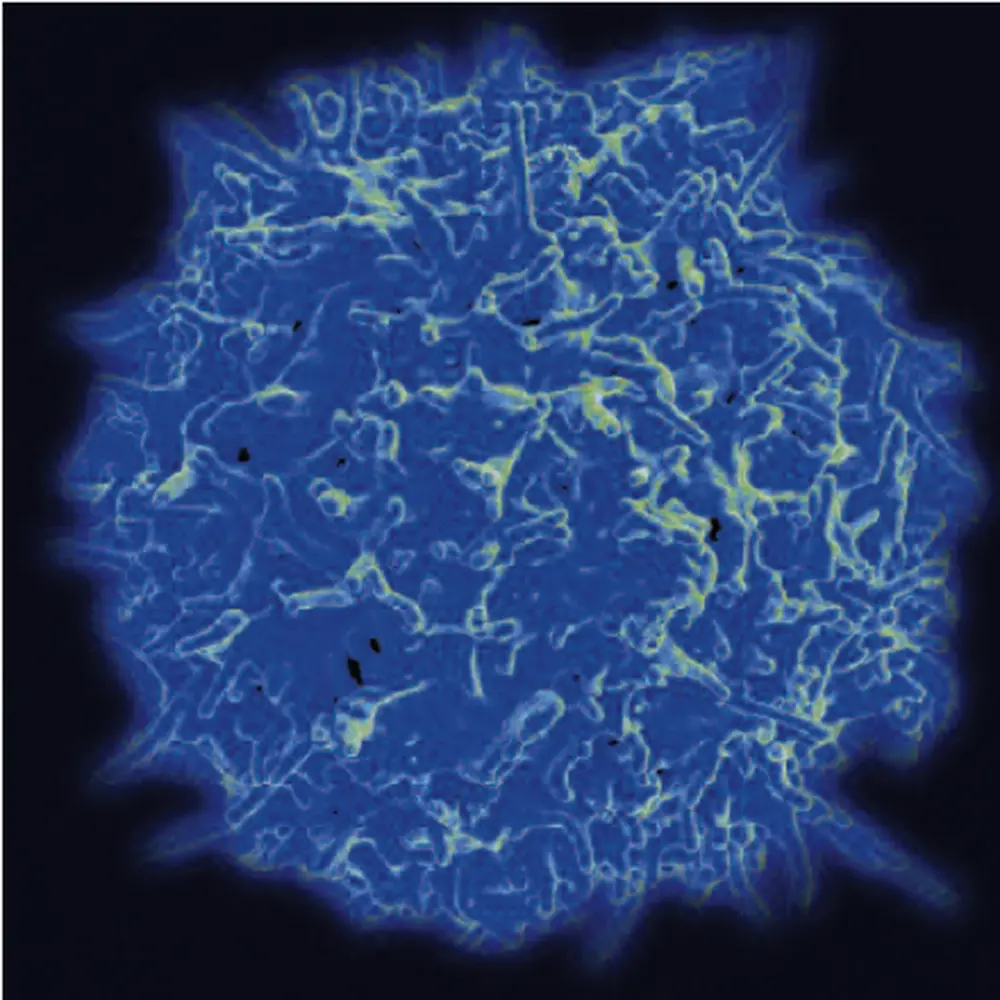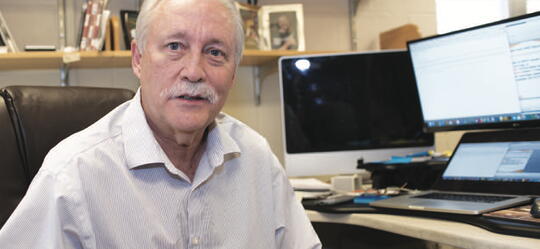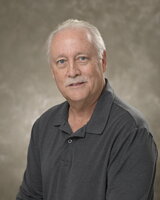
Last summer, the U.S. Food and Drug Administration approved the first gene therapy treatment for cancer, giving hope to patients who have not benefited from more traditional drug therapies. It’s a treatment decades in the making, and some of the early stage work was done in the lab of David Kranz at the University of Illinois.
Kranz, the Phillip A. Sharp Professor of Biochemistry in the School of Molecular and Cellular Biology, has been involved in T-cell research since working as a postdoctoral researcher at the Massachusetts Institute of Technology, involved in early discoveries about how T-cells might be used to combat a host of diseases, including cancer. Prior to this, he trained as a graduate student at Illinois under Ed Voss, who at the time was the only immunologist on campus.
T-cells are involved in the body’s immune response, destroying foreign or damaged cells and viruses. In some cases, T-cells don’t recognize and attack like they’re supposed to. Kranz has spent decades modifying and improving the receptors on T-cells to help them better target diseases and pathogens, improving the body’s immune response.
“Immunotherapies are the biggest class of new therapies for cancer by far over anything else,” he said.
Kranz’s early work at MIT included proof-of-concept work for using T-cells to fight diseases like cancer. He and colleagues now know that T-cells can be reprogrammed to fight cancer.
At Illinois, Kranz was involved in developing bi-specific antibodies.The proteins bind to T-cells on one end, and then attach to cancer cells on the other.The antibodies essentially act as guides forT-cells to find cancer cells and then do their natural jobs in destroying those cells.
“People constantly develop abnormal cells, and T-cells recognize and eliminate them.We never know it’s even happening. But with cancer, those T-cells don’t do their jobs,” said Kranz. “We have been looking for ways to harness T-cells to act against cancer, and bi-specific antibodies are one way we’ve done that successfully.”
There is currently one FDA-approved bi-specific antibody developed to treat lymphoma. Many others are in clinical trials.
Since the late 1990s, Kranz’s lab has also been working with T-cells for recently approved gene therapy treatments. The technique, called CAR (chimeric antigen receptor) or TCR (T-cell receptor) T-cell therapy, involves removing a patient’s T-cells, engineering the cells to express receptors so they will recognize cancer cells, and then putting them back into patients to attack those cancer cells.
"Now you’ve basically armed the patients with billions of T-cells that can recognize the cancer,” Kranz said.

The Kranz Lab started working on ways to modify T-cell receptors, some of the basic work that has led to today's cutting-edge treatments.
“We developed the methods that you could actually try to engineer and improve these receptors,” Kranz said. “We’ve received 17 patents, which include methods of engineering receptors as well as some of the receptors themselves.”
Many of the patents revolve around a technique called “yeast display,” a technique for engineering proteins using the cell walls of yeast to single out antibodies. The technique allowed researchers to create millions of mutated antibodies within days, and then use high-throughput screening to select the best candidates.
Kranz and K. Dane Wittrup (now at MIT), who had been a professor in chemical engineering at Illinois, founded a company called BioDisplay Technologies in 1998. The company used yeast display to develop better antibodies or other proteins such asT-cell receptors.The company was acquired by Abbott Laboratories in 2001.
In 2008, Kranz again founded a biotechnology company called ImmuVen. ImmuVen opened in EnterpriseWorks, initially focusing on developing a therapy for toxins produced by methicillin-resistant Staphylococcus aureus (MRSA), but later developing T-cell therapies for cancer. That company was acquired by a major pharmaceutical company at the end of 2014.
Today, Kranz and his lab continue to work with T-cells, CARs, and TCRs but they also are delving into a new research area that is looking at the development of vaccines against cancers. Vaccines are often thought of as a preventative measure against a disease, but the goal of the work is to use them as active therapies.
An overarching goal of these types of therapeutic approaches is to generate memoryT-cells in cancer patients. Typically, these cells develop after an immune response to infectious agents, and they kick into action if the pathogen is reintroduced. Children who contract chicken pox, for example, have memory cells that play a role in keeping them from getting the illness again.
Kranz believes T-cells can do the same thing with cancer.
"We want to boost the patient’s own T-cells in the body, activating enough of them to ‘seek and destroy’ the cancer and then convert some of the T-cells into long-lasting memory cells,” Kranz said. “If you have memory cells and the cancer comes back, a patient would have the T-cells that can eliminate the cancer.”
Kranz is working to identify the best cancer antigens to target with potential vaccines. He is now part of the Anticancer Discovery from Pets to People theme at Illinois’ Carl R. Woese Institute for Genomic Biology.
Like many scientists whose work touches on cancer, Kranz wasn’t originally focused on the disease. Instead, he was fascinated with immunology and the ability to use the body’s natural defenses to treat or cure diseases and lessen or eliminate severe side effects such as those experienced by patients receiving chemotherapy.
“The promise of using immunology to fight cancer was clear in the 1980s. You have the potential to let the immune system go in and recognize only the cancer cells and not the healthy cells, eliminating those side-effects,” said Kranz.
Over the years, Kranz studied basic molecular immunology and applied his research to autoimmune diseases but shifted focus to cancer because he saw the toll the disease can have on patients and families, including his own.
“As a disease, the need for cancer therapies is so significant that we decided to focus more on it,” Kranz said. “In immunology, we just happened to be working on things that you could immediately see would have an impact on cancer.”
